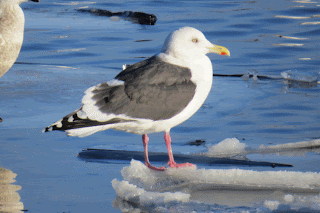 |
| Herring Gull at Canal Park |
Just about every winter afternoon, birders gather in Canal Park in Duluth to watch gulls. The gulls spend their mornings feeding at the Superior landfill on Wisconsin Point and various other points in the area, and in afternoon start moseying in to roost on the lake for the night. For a couple of hours, a great many of them join the Mallards close to the break-walls along the shipping canal.
 |
| Gulls in Canal Park |
Some birders toss out bread, which draws many of the gulls right in, easy to photograph and identify, even without a spotting scope. Of course, the gulls don’t stay that close to the shore to roost at night, so a scope is handy for watching the birds already settling in for the night.
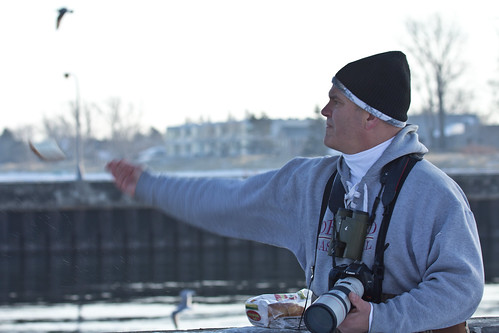 |
| Mike Hendrickson tossing bread to draw in gulls at Canal Park |
This year, SEVEN species of gulls have been regularly occurring at Canal Park and various spots in Duluth and Superior, and I saw all seven in Canal Park on Saturday afternoon. Two are on my Conservation Big Year target list of birds of conservation concern: Thayer’s and Iceland Gull. Both look confusingly similar to Herring Gulls, but nest in very remote areas and so little is known about them except that their carcasses outnumber those of other birds after large oil spills in their breeding areas.
 |
| Thayer’s Gull at Canal Park |
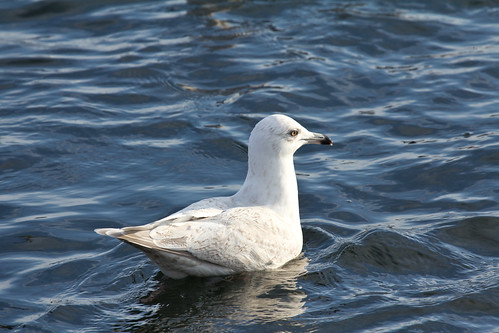 |
| Iceland Gull at Canal Park |
Much rarer in the Midwest than Iceland or Thayer’s is the Slaty-backed Gull, a species never recorded in Minnesota before 2006. Rare as it is, the Slaty-back is not a species of conservation concern because it is so common in the northern Pacific, where it breeds from Siberia to Japan; small numbers breed in Alaska.
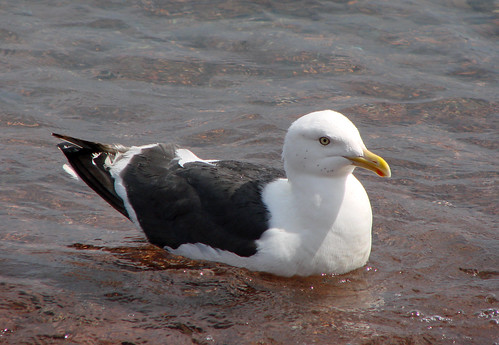 |
| Minnesota’s first Slaty-backed Gull, in Grand Marais in 2006 |
 |
| These two Slaty-backed Gull shots were digiscoped by Larry Kraemer |
 |
| Slaty-backed Gull (center) in Lake Superior off Canal Park
From the other side of the continent, Great Black-backed Gulls are appearing more and more often at our end of the Great Lakes, but this largest of all gulls is most abundant on the Atlantic coast.
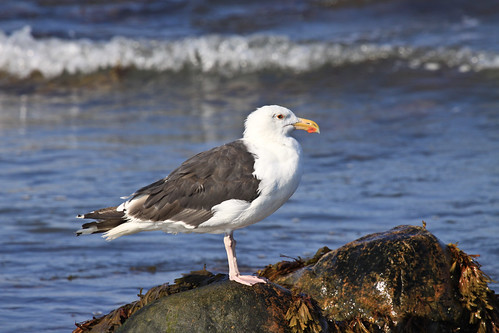 |
| Great Black-backed Gull on Long Island in August 2009 |
Glaucous Gulls from the far north round out the species hardest to find in Minnesota.
|
 |
| Glaucous Gull |
Herring Gulls, by far the most abundant gulls here in winter, have so many plumage variations that they’re tricky to separate from some of the others. The Ring-billed Gull, abundant in summer, doesn’t really belong here in winter, but a few individuals have been spending the season here. These are the gulls most associated with mooching food from summer picknickers, and some of the individuals wintering in Duluth don’t give up the habit easily. One stayed on the wall waiting for handouts and was so persistent about approaching me that I kept having to step backwards in order to get all of it in a photo.
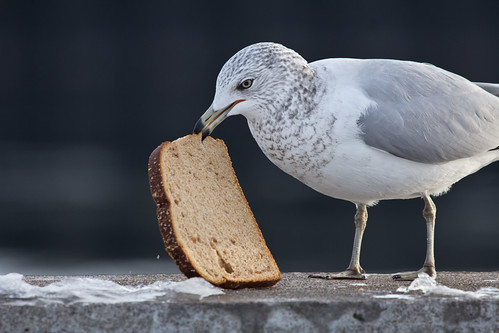 |
| Ring-billed Gull at Canal Park |
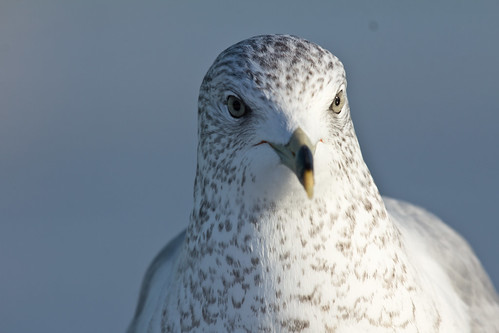 |
| Ring-billed Gull at Canal Park |
Some gull aficionados up here offer classes in Gull ID, and if you’re patient and get to Canal Park when experts are there, they can point out the rarer species. If you’re anything like me, though, you want to figure out your own birds. Gull identification takes patience, persistence, and careful study, but when conditions are right, it’s quite doable. You’ll need a good field guide, such as the National Geographic—read all the entries of the likely species and study the photos at home before setting out. I also love Steve Howell and Jon Dunn’s excellent Gulls of the Americas, a Peterson Reference Guide. It’s important when mastering any group of birds to not get emotionally attached to your conclusions or prickly or stubborn in the face of questions about your identifications, and important to realize that gulls show a lot of variation and do sometimes hybridize, so even in perfect light at close range, top experts can get stumped, and when a bird is at a distance or doesn’t show itself from every angle, it may just not be identifiable. It’s that difficulty level, along with the understanding that the rarer of these gulls have wandered in from great distances, that makes gull identification so very rewarding and even thrilling.
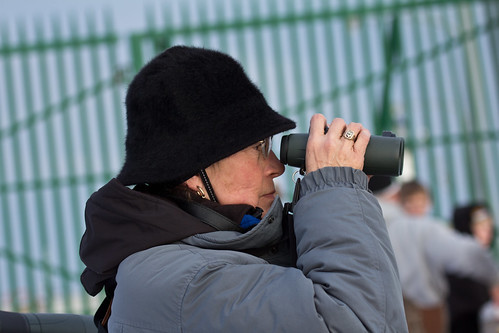 |
| Jan Kraemer scanning gulls at Canal Park |
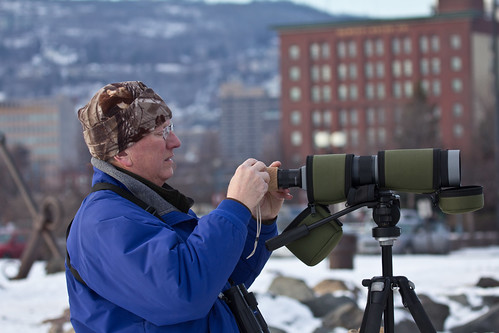 |
| Larry Kraemer digiscoping gulls at Canal Park |
 |
| Peder Svingen studying gulls at Canal Park |
New species for day:
- Common Merganser
- Slaty-backed Gull
- Iceland Gull
- Glaucous Gull
- House Sparrow
(New total= 41 species)
Miles driven =13, +267 previous = 280 total.










